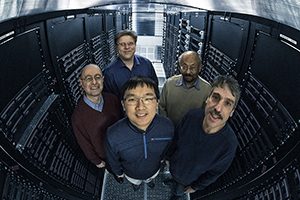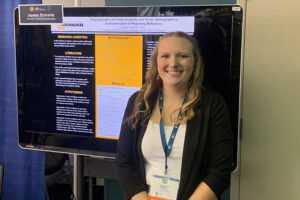How do proteins execute a task? How do they interact with one another? How do viruses and bacteria affect proteins to infect a cell? Until recently these questions went unanswered because scientists could not image most proteins.
Then the National Science Foundation created a Science and Technology Center which includes researchers from nine institutions, including UWM, who use X-ray Free Electron Lasers (XFELs) to create slow-motion movies of molecular events happening at split-second timescales.

Called BioXFEL, the center researchers are now capturing biology at the atomic level – processes that are difficult, if not impossible, to see with other methods. NSF has just renewed $22.5 million funding forBioXFEL so members will continue work they began in 2013.
The XFEL produces incredibly intense X-rays in extremely short pulses. It allows scientists to see essential processes, like how drugs bind or how proteins work, at rates as fast as a billionth of a billionth of a second.
Here are two UWM accomplishments achieved using the XFEL at the SLAC National Accelerator Laboratory in California:
Abbas Ourmazd, distinguished professor of physics
Most viruses are too small to be photographed by light. The XFEL’s intense X-ray flashes produce “snapshots” of particles at the nanoscale through diffraction. The X-rays hit the particle and scatter in a pattern that provides the data for mathematical reconstruction.
Ourmazd and his lab members provide the data science necessary to transform the millions of still, two-dimensional images the XFEL equipment generates into clear, sequential, 3D movies through the BioXFEL collaboration.
For example, Ourmazd’s lab has made possible never-before-seen, 3D movies of a virus preparing to infect a healthy cell. “Our approach is a powerful means of mining huge amounts of data to get information about specific, rare events,” he said.
Marius Schmidt, professor of physics
The bacteria that causes tuberculosis are particularly difficult to treat because they are often antibiotic resistant. But in order to design drugs that foil resistance, scientists first have to know how the bacterium disables the antibiotic at the atomic level.
In experiments led by Schmidt, a team of BioXFEL researchers mixed an antibiotic with an enzyme, a class of proteins that TB bacteria produce to protect themselves. Then they watched in real time as the enzyme attacked the antibiotic molecule and burst one of its chemical bonds.
“This proof-of-concept study shows that we’re able to see the shape and intermediate stages of the molecules during the process,” said Schmidt, who recently participated in the first experiment at the European X-ray Free-Electron Laser which is an order of magnitude speedier than SLAC’s.
“After decades of trying other techniques in the field of crystallography, the technology is now here.”







